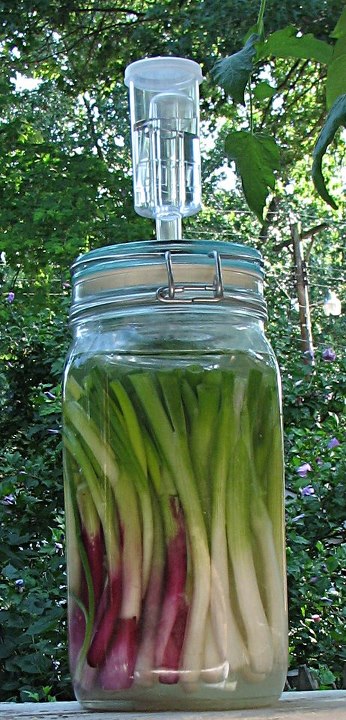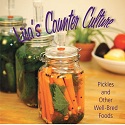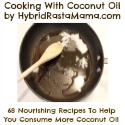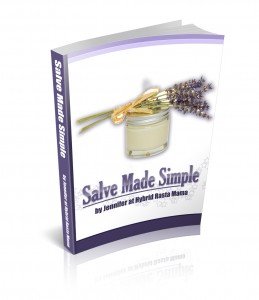Anaerobic Fermentation: Our GAPS Missing Piece
Those of you who have been following my blog for a while will know that my family has been on GAPS since November of 2009. Lyme disease and some other issues have certainly complicated our situation but still healing has not come like we had expected. You may recall my post from this past spring about taking my youngest to an enzyme therapist. (Read it here Enzyme Therapy.) She had been suffering with a daily stomach ache for months at that point in time. While I could often help it with essential oils or other approaches it kept coming back daily. Since it was gut issues for her that led us to GAPS in the first place I was very concerned that we were coming full circle and ending up back where we started. That didn’t feel good.
I was very relieved that the enzyme therapy helped her and while I did not want to continue lots of supplements long term it was very nice that food stopped hurting her as long as she took her enzymes. That gave me some space to figure things out. In the meantime a friend contacted me. She had read my post about enzyme therapy and she wanted me to know that there is a natural way to increase the enzymes in foods and improve digestion. Anaerobic fermentation. Well, I argued, this daughter did not tolerate fermented foods at all. They caused painful rashes where they touched her skin and did not make any difference in these stomach aches we had been dealing with. I knew that fermented foods were supposed to improve digestion and I kept trying to give them to her (and she ate them willingly) but to see the red painful rashes on her face and arms wherever the juice got onto her was more than I could bear. It seemed wrong to feed her ferments and wrong to take them away. Enzyme pills seemed to be a safer approach. However, I was intrigued. My friend pointed out that I hadn’t been making anaerobic ferments and that how you ferment does make a big difference, but still I was skeptical. I began to look into it. This past spring there were a lot of posts in the blogsphere arguing for and against anaerobic fermentation.
Once I was convinced that anaerobic was important then I had to learn what exactly made a ferment anaerobic. There are quite a few systems out there that claim to work in creating an anaerobic environment for fermenting. I looked at as many as I could find and asked questions of various people to decide what I should do. In the end I decided that I have spent a lot of money on supplements, Dr’s and special foods over the years. Why was I unwilling to invest in a proven way to make these fermented foods for my family? I looked at both of the options that I had determined would work. The Pickl-it jar and the Harsch Crock (German Style crock). I considered some cheaper options with plastic lids and there was enough of a question about their effectiveness that I didn’t want to waste my time, perhaps saving a few pennies now only to regret it and have to upgrade later. Looking into the Harsch Crock revealed one big drawback. It can get moldy and then you often have to throw it out. My basement tends to get mold in it. I didn’t want to invest in an expensive crock only to have to discard it after a batch or two of kraut. Pickl-it jars are all glass so even if it gets mold I can replace the non-glass parts for very little money and eliminate the mold. That just sounded like a better investment to me. Plus they are much more reasonably priced. One jar is much less expensive than a juicer or a dehydrator or even most crock pots. Hardly a cost prohibitive investment for our health.
Once my decision was made I lost no time in ordering some Pickl-it jars. Unfortunately for me I was a part of a trend of lots of people buying Pickl-it jars and shipping took a couple of weeks. Even so, when my Pickl-it jars arrived I still really didn’t know what to do with them. My approach to fermenting needed some fine tuning to be sure and I began reading on the Pickl-it Site. Luckily there are quite a few bloggers converting their recipes to make them appropriate for use in a Pickl-it so there are new ideas all the time.
The first ferment I started was water kefir. That proved to be easy and the method I settled on can be found here. Water Kefir Primary and Secondary Ferments. Right away I began to notice an improvement in my daughters digestion. As long as she had some water kefir with a meal she could skip her enzymes with that meal. Yahoo!!! That was a great discovery! Water kefir is way cheaper to make and more pleasant to consume than those enzyme pills. We even took our water kefir on vacation with us this summer because I knew we needed it’s magic to keep her gut happy.
I was enthusiastic to begin fermenting vegetables in my jars. I made a batch of sauerkraut right away but since sauerkraut takes 10-12 weeks to cure I did not get to try that one for a while. I got a bumper crop of green onions from my CSA so I decided to try fermenting them (pictured below). Aren’t they pretty? I also made some bread and butter pickles and some dill pickles early on. These were fantastic! And the best thing? NO RASH!!!!! My 4 year old could eat them and not a hint of redness appeared on her face or hands. When she ate Bubbies dill pickles or sauerkraut red welts would come up in those same places. WOW!!! Something was really different about these foods! And her gut was improving even more! Her poop improved! Her stomach aches lessened and were occasional instead of daily.
In early August we opened up our first batch of kraut (and I was immediately kicking myself for not having more going yet). This stuff was a whole new level. The improvements in everyones digestion was apparent, and the kraut was delicious! We devoured a liter the first week (I only made 3 L of it) and I had to slow us down or we would run out far too quickly. My home made mason jar kraut has always been tan and mushy unless we consumed it right away (and it caused rashes on my daughter no matter how young or old it was). We just didn’t care for the flavor of it and ate it out of duty, not desire. In fact in the fall of 2011 I made 3 big jars of sauerkraut. I had heard that longer cure times are better and so I let it cure for a month on the shelf. I remember watching the cabbage turn brown from the top down in the jar and I thought that this meant that the fermentation was happening and I got so excited! Oh how foolish I was. It took us all winter to eat half of that mushy kraut once I finally opened it. We just did not like it at all. I purchased Bubbies Kraut since we liked the flavor so much better yet it still caused those rashes on my daughter. Well this anaerobic, 10 week kraut, that I made in the pick-it jar caused no rashes at all. And it was green and crunchy! We greedily gobbled it up and my kids cried when I wouldn’t let them eat all that they desired.
Now here we are about 4 months after I began to ferment in the Pickl-it jars. My daughter still needs an enzyme pill for meals that do not contain ferments. I am hopeful that over time her digestion will improve so much that she can eat the occasional meal without enzymes or ferments when necessary. Her poop is looking better than ever. Her tummy isn’t as bloated as it once was. (She even brought this up the other day). Those rashes on her hands? Those were a reaction to the histamines in foods that are not properly fermented. My ferments properly made in the Pickl-it do not have histamines in them so those rashes are a thing of the past.
I’m getting more and more excited about preserving my foods using the Pickl-it jars. I currently have 3 kinds of cucumber pickles, kraut, green onions, watermelon rind pickles, turnips, garlic, ginger, carrot, sugar (water kefir) and yogurt in various stages of fermentation from just started today to finished and in cold storage while we eat it. I still have a lot to learn about fermenting but my daughters improved health is a huge incentive to continue on this path and learn more and more. My own health has also improved a ton in this time frame. I can’t say what has been caused by my cavitation surgery and what was caused by changing how we fermented our foods and I don’t really want to sort that out. I can say for sure that my gut is happier when I too am consuming ferments with each meal and I have no intention of going back to the way we were.
Have you tried anaerobic fermentation in a Pickl-it Jar or a German Style Crock? Have you noticed any improvments to your health from these foods? I would love to hear about it in the comments.
Shared on GNOWFGLINS Simple Lives Thursday #114
Many of my blog posts contain affiliate links. Purchasing through an affiliate link allows me to keep blogging and sharing what I learn with you. It is a bit like leaving a tip for service and is very much appreciated. Thank You! -PattyLA



62 Comments
Trackbacks/Pingbacks
- Fermentation Friday: Why I Won’t Ferment Without A Separate Airlock Part I | Cooking Traditional Foods - [...] from Loving Our Guts shares how fermentation was the missing piece they needed to be successful on the GAPS …
- Give Away: Lisa's Counter Culture E-Book worth $37 | Loving Our Guts - [...] my family is on GAPS and has had such improvements lately with anaerobic fermentation (Anaerobic Fermentation: Our GAPS Missing …
- Fermentation Friday - Tasty Ferments That You May Have Missed This Week (10/19/12) - Delicious Obsessions - [...] post titled Anaerobic Fermentation: Our GAPS Missing Piece, from Patty over at Loving Our Guts is a great explanation of how true anaerobic fermentation [...]
- The Great Yogurt Experiement | Loving Our Guts - [...] Pumpkin Bread (GAPS, LOD) » The Great Yogurt Experiement Ever since I learned about fermenting in the Pickl-It …
- Crispy Crunchy SAUERkraut | Loving Our Guts - [...] you have read my post about Anaerobic Fermentation our GAPS Missing Piece you know how important the Pickl-It jar …
- Fermenting in Pickl-It Jars - [...] You can see more of our health improvement results on my blog: Anaerobic Fermentation Our GAPS Missing Piece. [...]
- Preparing for GAPS Intro: My 12 Step Checklist : Oven Love - [...] results when we take on the GAPS diet, so we want our ferments to be great, too. There’s a …
- Top 10 Signs Your Family is on GAPS | Loving Our Guts - […] Your 5 year old is horrified that a meal is considered over before a ferment is […]


















This is so encouraging to hear. I bought some Pickl-its a few months ago but so far have mostly only been using them for my water kefir and milk kefir. I really need to start making vegetable ferments again. (I fell of the veggie ferment wagon a while ago.) Thank you for the motivation to kick that into gear.
Meghan,
You won’t regret it! I’m so excited by my veggie ferments now!
Is it possible to get the Pickl-it onions recipe??? Thank you!!!
Hi Nanette,
I’m pretty sure I just loaded them into the pickl-it and then poured a 2% brine over them. Let them ferment on the shelf for a few days and then moved them to the fridge once the bubbling died down. Since they were one of the first things I made I can’t be sure how I did it but that is how I would do it now.
I love that it’s making such a difference for everyone. I have a couple of Pickl-its on order to try out and to supplement my Harsch crock. I have about 50 cucumbers waiting to be pickled (my first garden is officially a success!) and my crock is already filled up with a large batch.
Mason jars are not the way to go for us either. My ferments too often got contaminated like a lot of people. I’m looking forward to trying the Pickl-its.
Thanks Jen! I’m sure you won’t regret it.
I am sure you read about this since you seem to have done quite a bit of research, but I am curious about one point since you did not mention it. It is my understanding that the key to keeping the fermentation anaerobic is to weigh down the solids to be submerged under the brine. I use river rocks, or plates depending on the vessel I am using. Did you try that?
Hi Dia,
Keeping a food under the brine is not the same thing as keeping it anaerobic. All of my former ferments were under the brine and weighted down with all manner of things. Unfortunately, if the brine is in contact with oxygen some of that oxygen will diffuse into the brine. That is just how these sorts of things work. You need to find a way to prevent oxygen from touching the brine for it to be anaerobic. This is achieved in a pickl-it jar because those gases that the fermenting process create push the oxygen out through the air lock.
Hi Dia,
Thank you for reminding me of this topic in order to address it in my work. Rocks can be made and degraded by microbial action. Therefore a seemingly inanimate rock even if were soaked in bleach (not recommended) or baked it would still be FULL of at least bacteria. Strike one against using something like that in any kind of fermentation vessel. Beyond that, all you need on the rock is a good slime trail from a slug or snail that wasn’t completely removed to get a great case of liver flukes. Strike two. Folks would also need a geology degree and a spectrometer to even know what kind of minerals were in the rock to be aware of what would leach in the high acid conditions of a ferment. Strike three and the rock game is all over.
Great post patty. I feel that this approach would help us to. Nicola
Nicola,
I hope it helps! Keep me posted on your progress please.
I can’t BELIEVE that thru my internet research (and a page I liked on FB) that I stumbled across your blog. I have been fermenting and on an extremely clean diet for almost 6 months now. My gut has improved. I began with an elimination diet, then quickly onto the BED diet and I have now been on the GAPS Intro for almost a month. The entire time my skin has been a mess. To begin with I was convinced this was just die-off and detoxing. But this morning I was at an all-time low… and just HAD to figure this out. I believe the histamines in the ferments are my issue too - I’m going to cut them out completely (order some pickl-its for later) and see what happens. I actually PRAY this is my problem - it has been such a mystery to me. Maybe I won’t have to have that skin biopsy after all!!
PS - Did you find you had to cut out any other histamine foods out - or was the ferments enough???
Thank you so much for posting this and it’s so wonderful to hear that your wee girl is on the mend too
Cutting out fermented foods was enough for her. In fact some foods like cheese were also a problem until I changed how we fermented. Now she can eat cheese without rashes as well. It seems like it just lowered her over all histamine level that much to switch how we now ferment. I hope it is the answer for you too!
So do I! Can I ask you one more question (then I promise I’ll stop!) how long did it take before you started seeing some results (as I sit here itching away), but it’s only been 24 hours - and it always seems to flare at night??
I’m also trying to source Pickl-Its. Here in Australia, they are twice the price of that in the USA
Contact Kathleen (owner of pickl-it) about the local supplier there. I’m pretty sure there is a local distributor in Australia. I have no idea how close they might be to you but that should help with price. She will also ship the lids internationally if you can find the jars locally that should cut way down on price.
The itching for her was always just at the time that she ate the foods but I never let her eat much because of it. Her digestion improved within a month of starting the water kefir. I don’t remember exactly when but it was also a gradual improvement.
I keep re-reading these posts when I need some hope and inspiration! Just wanted to thank you
Durae
I know kraut is a 12 week ferment, but do you have a resource that shows how long other common ferments take in order to eliminate the histamine load? Thanks in advance!! Your blog is so helpful.
I do not. My experience is that once a food is fully fermented the histamine level is low. For most foods this is about 1 week at room temp. My pickles took much longer to be fully fermented this summer but I don’t know if they had histamine that whole time since I didn’t give any to my histamine sensitive daughter till they were done. I just fermented some shredded kohlrabi and she has had no issues with it. I fermented that for just 1 week.
How can you tell if a food is “fully fermented”?
Also, what happens by the end of the fermentation process that causes histamine to disappear?
Good question. Most foods are fully fermented in about a week or less. The best answer I can give you about how you can tell is that it tastes done. Sour, not overly salty, and uniform color throughout. The histamine is produced as a part of the fermentation process and then consumed by the fermentation, just like the sugars and salt are consumed in the process.
I live in Australia I’ve never heard of these jars any idea where I can get some from …being glass not sure how they would handle being transported all this way …I’d love to get some I also have terrible gut and have tried so many things to make it better, currently making the kombucha and having green smoothies….
Hi Sherrie,
There is a distributor in Australia. Contact Pickl-It to find out how to contact him. Even if he isn’t local to you, shipping from him is sure to be cheaper and faster than shipping from America. Otherwise Pickl-It ships lids to international customers and then you can find the jars that they fit locally. They are made in Italy but are sold all over the world. Good luck!
There is only one distributor in Australia - Kitsa’s Kitchen - this is her Facebook link
https://www.facebook.com/Kitsas.Kitchen?ref=ts&fref=ts
I ordered some jars from her recently - and my kraut is fermenting away in the fridge as I write
I’m glad to hear anaerobic fermentation has helped you and your family so much! I’m currently fermenting in mason jars and am intrigued by your post. One thing that comes to mind, though, is that traditional people fermented aerobically, right? I’m prone to trusting the wisdom of traditional cultures. But perhaps this is one of those instances where, due to modern disease-causing elements, we have to use modern technology to heal?
Hi Samatha,
Actually traditional cultures went to great lengths to ferment in closed systems. They would seal it in an animals stomach, put it in unglazed jars sealed with wax. Bury it the earth, and other ways to keep they oxygen out while allowing the gasses that fermentation produces to dissipate. the Harsch Style Crocks are another traditional method. It is easy to understand why they would have gone to such great lengths to do this when you understand the effect it has on the food. It can be the difference between rotting or fermenting.
Have you kept food in mason jar ferments long term? Like all winter? Does it stay green and crunchy for months on end? Mine did not. That was a big part of why fermenting was discovered. It was a way to preserve the harvest till the next year.
Hi Patty. Interesting. I didn’t know traditional fermentation was a completely different chemical reaction than the conditions in a mason jar. I’ll look into the Pickl-it jars. It seems easier to do this way, as you just add salt water to the veggies, instead of pounding them? Thanks again!
Have you read my post about how to make Sauerkraut yet? Crispy Crunchy Sauerkraut I do not ever pound my kraut but in generally I don’t add brine either.
Hi Patty, You may have mentioned this in another post, but do you mind sharing which enzymes you have used for your daughter? We have significant histamine issue in the family, and I would love to know of things that help. I have my Pickl it on its way to me, can’t wait to try some recipes! Thanks, Susie
Hi Susie,
The enzymes that we used can only be purchased from an enzyme therapist. They were selected based on some testing so telling you what worked for her won’t really help your family since we all are different. I have a friend who has found that working on liver health has improved her histamine tolerance so that may be something to try. Here we use the Be Young Liver Cleanse. We have also used a tincture called Liver Life . I’m including my affiliate link to it on Amazon so that you can see exactly what product I am talking about.
Patty,
Thanks for the blog. I just ordered a bunch of Pickl-It jars. The lady was very nice and helpful, too. I’m really looking forward to trying my new jars!
Miroslava
So glad to hear things are working well for you! I tried the Pickl-It jars, but was sadly unsuccessful with my first ferment - a saurkraut. When it was ready, it was a slimy brown color I’ve been meaning to try again but have been uninspired since! What do you suppose I did wrong?
I’ve been meaning to try again but have been uninspired since! What do you suppose I did wrong?
It sounds like oxygen got in somehow. Was the D ring on it? (I discarded one early on thinking it wasn’t important) Was there water in the air lock the whole time? Check the rim of the jar and the glass lid. Any chips?
The jars are great but not so necessary. Just using the jar with a rubber or silicon ring and filling it up with water works really well for me and is how I learned. I never have mold problems and keep the veggies under the brine by cutting food grade plastic yogurt containers to use as pressure to keep things submerged. The fermentation with added kefir whey, will cause the ferment to bubble over but is caught in a shallow dish. After a week or so I refrigerate for further aging. Regular mason jars with just a finger tightened lid works with the same principle if that is all you have….happy fermenting!
Rosemary,
I tried that method for many years before I tried using Pickl-it jars. There is no comparison. The food tastes so much better and has the anaerobic bacteria in it and the histamines are gone. None of those were able to be achieved using mason jars since they can’t be sealed unless the contents creates a vacuum (like when you can food in them).
Sadly, I too fell for the myth that being under the brine kept it anaerobic and resisted other methods when I first learned of them. When I think of the years I wasted trying to heal my children’s guts using mason jar ferments. Ah well when you know better you do better.
About plastic in the jars, I personally would not be comfortable having plastic in contact with an acidic food like an active ferment since acid degrades plastics. Food grade or not I wouldn’t want it dissolving into my food.
Fido jars are also anaerobic and much easier and cheaper to come by. Plenty of info about them around. Just sayin’.
Fido jars are missing an airlock and my experiments with them showed that they harm ferments. The main advocate of Fido jars also suggests that fermenting should happen at room temperature and for just a month. While that may maximize the number of bacteria you see in the jar that doesn’t tell the whole story about fermenting. It is about being low histamine (happens at the 10-12 week point). Being full of enzymes, and full of the right kinds of bacteria that are the most beneficial. I tried using a fido for making yogurt and it was not a success. That experiment is linked at the bottom of this post. I do use fido jars for storage of sauerkraut that is over 5 months old and other older ferments or for when taking ferments away from home but otherwise I keep an air lock on the jar because I have been disappointed too many times by the results when I didn’t.
What’s the difference though in practicality? Both fido jars and pickle-it jars let air out but not in. There are other pages I’ve seen around where the author has experimented thoroughly with several types of jars and found fido the best.. I wonder if possibly your fido might have had a leak or something? There are whole online communities who swear by fido jars including a large Facebook group ‘Fido fermentation’. I’m sure pickle-it’s are great, I’m just not sure it is necessary to spend so much $$$ on jars. But I’m happy to be re-educated if you can tell me how an expensive airlock beats the natural ‘burping’ effect of the fido rubber gasket.
The difference is if the gasses can build up or not. A fido does not let gasses off easily. It needs to build up to a certain pressure before it can escape through the seal. My experience with both yogurt and sauerkraut was that over time the fido lid damaged the ferment. Part of why I ferment foods is to preserve the harvest. If I have to eat them all up right away that defeats the purpose.
I wish it wasn’t necessary to spend that much on jars. I really do. I would rather spend my money on something else and it was difficult to convince me to even try the jars in the first place.
Interestingly enough I was just looking for feedback on another type of airlock and found a beer brewing community where everyone generally agreed that any sort of set up that caused gasses to build up before they triggered a release was running the risk of damaging the ferment because too much CO2 is bad for the process, just like oxygen is bad for the process.
I do think that Fido jars are better than mason jars but my experience tells me that jars with an air lock are better still. This is especially true for long term storage. That air lock is important to keep the ferment from going bad. If you are opening the ferment each day to remove some of the fermented foods then I don’t think that the gas builds up enough to cause issues but when you leave it closed for a few months as I often do, then those gasses build up and can ruin your food. Of course my yogurt experiment showed that even in the short term for a ferment that did not have any obvious off gassing the air lock makes a difference.
Sorry! I just read your post on Kefir. I will have to source some grains and try it in my pickle-it.

I did write some questions before, but they did not go through when I pressed submit, which is probably good as I found some of the answers on your blog. I have read a number of blogs and they say that only sauerkraut needs 10-12 weeks to be low histamine. I have read that other vegetables need less time to ferment, but none of the statements about other vegetables discuss this in relation to histamine formation. Do the shorter ferments on other veggies still produce a low histamine brew? I really want to be sure as I am so sensitive and my symptoms relate to postural hypotension, dizziness and fatigue, as well as depression and issues with overstimulation (loud sounds and too many demands) which makes me really struggle to function.
I also had a thought . . . I am a science teacher and I could not help myself, to reduce oxygen once the food has fermented and you are eating it, as the contents get lower in the jar, you could probably do a flush with carbon dioxide each time you close the jar. It would not be perfect, but carbon dioxide is heavier than oxygen and sinks when you pour it. If you lit a candle in a jar or bottle, then closed the lid, the oxygen would be removed from the jar by the time the candle went out. If you undid the bottle over your kraut and slowly poured the carbon dioxide rich air should displace the normal air in the jar and then you could shut the lid. The kids could experiment to see if it would work by pouring it into an open jar with a candle burning in it and see if it puts it out. I might try it with my kids. (only used wax stiffened candle wicks - some countries have exported candles with wicks stiffened with a lead salt).

Sarah
Tasmania
Gah! Just typed a long response and lost it-short version:
If you can’t invest the money in the entire pickl-it system at first, just buy the lids!! Saves on shipping and overall investment-I bought my jars separately from the grocery store and my airlocks online from a beermaker for $1 each. Now I can rotate them all around and get a lot of fermenting done with only 3 pickl-it lids.
Durae,
Unfortunately those lids made to go on mason jars are not airtight. The pickl-it jar is based on a Fido jar, not a mason jar. The jar is closed with a metal clamp and has a thick rubber gasket. Mason jars are not supposed to be airtight when the lid is screwed down on them. That is something that only happens when the metal lid is attached with a vacuum when you can with those jars.
I use the wire bale fido jars.
Regarding the Harsch crocks, can you please tell me what you mean about they can get moldy and then you have to throw them out?
I have a german crock like you linked to. It came with weighted “stones” to keep the veggies submerged, however those stones get moldy when I just store them in the cabinet (in between ferments). I just scrub them and soak them in vinegar before use.
The crock itself doesn’t get moldy. Can you please give me more information about this?
Thanks.
What I know about mold is that it can’t be cleaned out of porous surfaces. It is my understanding that the weights in the Harsch crock is not glazed and therefore if it were to get mold on it the mold would end up embeded in the material and be impossible to fully remove. I would be concerned about it getting moldy between uses. It sounds like your vinegar treatment is not eliminating the mold. It is also my understanding that you can’t purchase replacement weights for the crock so if they get mold in them you would need to purchase a new crock to replace them.
Sounds amazing! We’ve been on gaps for about 6 weeks but haven’t been able to tolerate ferments due to the histamine in them. I was told ANY probiotic contained histamines. Is this untrue?
I know of a woman with extreme histamine intolerance who was able to tolerate a probiotic that is all spores. Our properly fermented sauerkraut is not high histamine but I can’t say for sure that it has none.
Hi Patty,
Have you heard of or do you have any experience with The Boss Pickler from Primal Kitchen with a silicone dome valve airlock and matching silicone gasket? It is much shorter than the Pickl-it airlock. I bought Pickl-its after reading your blog and then just saw Pickle Me Too did a review on The Boss Pickler (which I had no idea existed). I like the low profile lid and not having to check the water level. Thoughts?
Thank you!
Hi Gretchen,
I have 4 of those lids on my 5L pickle jars because that is how they fit in the fridge. I am friends with Melanie from Pickle Me Too and have talked to her about the lids. That is why I purchased them for myself. I now have them listed in the resources section of this blog as well.
Awesome, thank you!
OK So I’m new to this and have a jar of kraut going and onions in the pickle-its. I’m confused on a few things. Does there always need to be water at the correct level during the 12 week ferment and even after it’s refrigerated? I’ve heard some people transfer to a fido jar lid once refrigerated so the pickle-it lid can start a new batch. Does that mean that I can do that only once it’s refrigerated or is that ok to do while in cold storage? Also do I let all my things ferment for 10-12 weeks or only kraut? Do things need to go into the fridge right after their ferment time or are they ok in a cool basement? Is there a good source for learning all this? I too am very sensitive to the histamine and currently only adding one drop of the juice to my soups trying to work up. I really need simple, basic help here as I don’t want to waste time and money and the pickl-it site is not very helpful.
Hi Shaunne,
1. Do you mean in the air lock or are you talking about he brine in he jar? There needs to be water in the airlock the whole time. It may need to be replenished. In the early stages of fermenting cabbage produces a lot of gas bubbles which can push the cabbage up above he brine level. It is ok to open the jar a time or two to push the cabbage back under the brine but not strictly necessary. The cabbage above the brine level will not rot or get moldy, it just won’t ferment evenly.
2. For anything with cabbage it should have an airlock on the jar for the first 5 months. I don’t bother with an airlock jar if I am going to be eating out of the jar daily but I do continue to use it when I make a lot of kraut and am no eating out of some jars.
3. Only cabbage needs to go for 10-12 weeks. Other foods are generally done at a week.
4. In the winter time my basement is in the 40’s most of the time I keep my jars in the basement not in a fridge in the winter. In the summer they go in the fridge. 60’s is not cool enough for ferment storage.
5. KerryAnn of Intentionally Domestic has a course all about fermenting. Here is a link to my blog post about it. http://www.lovingourguts.com/ywwa I would also suggest the blog Pickle-Me-Too.
Hi, just a quick question, how do people store fermented veg once opened? I made kraut last year but I didn’t know how to stop it going off once I had started using it -does it have to be kept submerged? Thank you, Holly
Keep it in a anaerobic jar that is at least 1/2 full.
After reading this post we switched to anaerobic fermentation! Now my 9 month old can tolerate spoonfuls of veggie juice without an eczema flare, where before he could barely handle one drop. Thank you! Thank you! I have no doubt you have greatly shortened our healing time on GAPS! My baby also started getting hives from SO many things he was eating, while allergy tests came up negative. His histamine levels were just too high to handle foods with high histamines. After a few more weeks on these ferments, plus we have given up eating all protein leftovers to reduce histamines too, we are going to test some of those foods he reacted to. I am very hopeful and will let you know how it goes.
Hi Patty,
It’s such a relief to read about low histamine fermentation. It seemed like a cruel joke to know that what you most need to heal is the very thing that will cause dreadful histamine reactions. But then I came across your article!!
My problem is that I’m not able to ferment myself. Do you or anyone else here know of someone in the US (east coast - but I don’t think it has to be terribly close by) who ferments for others (using the pickl-its, of course)? Any names or leads would be tremendously appreciated.
Thank you.
Wise Choice Market sells properly fermented vegetables. I don’t know of any other source.
I’ve been trying to find scientific sources backing up the claim that anaerobic fermentation does not produce histamines. Can anyone point me at these? I’ve seen a few blogs stating this but so far haven’t found the original source.
I read through most, but not all of the comments, so pardon me if this came up. I prefer Le Parfait jars over Fido as they are slightly heavier. But with either type, if you are handy it is quite easy to buy a glass drill bit and drill a hole that is the right size for a standard airlock.
I have a few faux Pickle-It jars made this way. Even at full retail price my jars are less than $10 total. Airlocks are maybe $1.90 with airlock, gasket (goes in hole to give it a rubber edge) and a plug for when you take the airlock out. Mostly now i buy jars at Goodwill or other thrift stores, sterilize them, replace the rubber ring on the lid, drill a hole, and I’m good to go. I have from .5L to 5L. The 5L was $2.99 for the jar.
I think there are even videos on youtube about drilling this type of glass hole.
In any case, if you’re motivated it’s pretty easy to put the parts together cheaply.
All the best!!
I do not recommend this since it is very difficult to make the holes so that they fit the grommet tightly and so that the glass doesn’t have micro splinters risking glass in your food. If you know how to prevent both of those issues making it yourself is a fine choice.